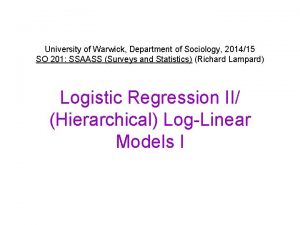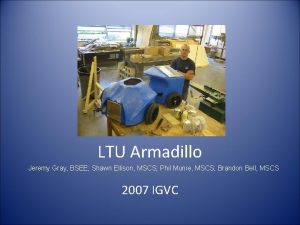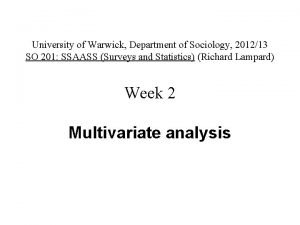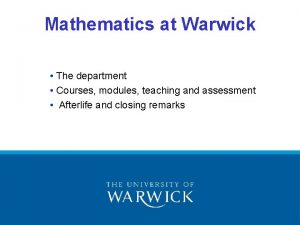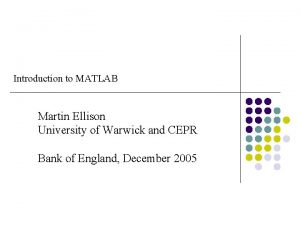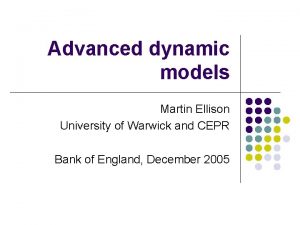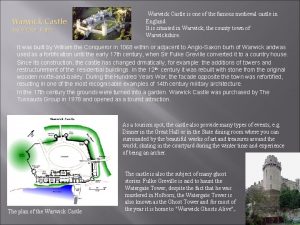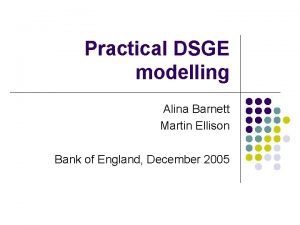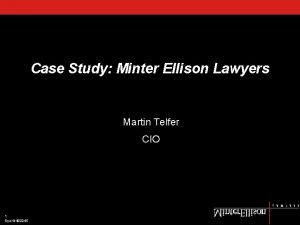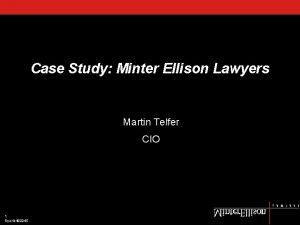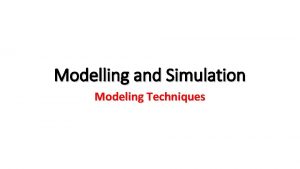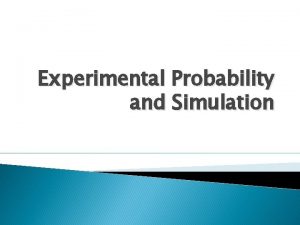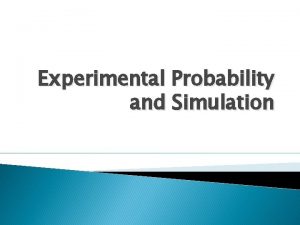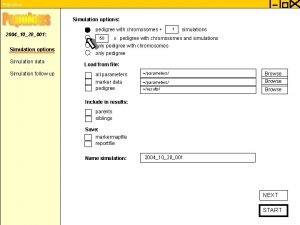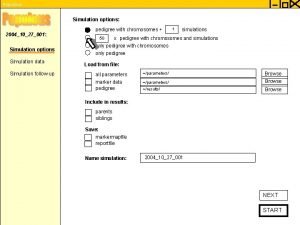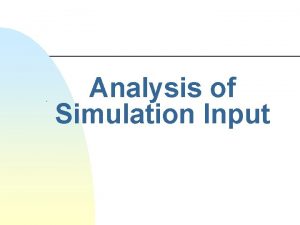Simulation techniques Martin Ellison University of Warwick and
























- Slides: 24

Simulation techniques Martin Ellison University of Warwick and CEPR Bank of England, December 2005

Baseline DSGE model Recursive structure makes model easy to simulate

Numerical simulations Stylised facts Impulse response functions Forecast error variance decomposition

Stylised facts Variances Covariances/correlations Autocovariances/autocorrelations Cross-correlations at leads and lags

Recursive simulation 1. Start from steady-state value w 0 = 0 2. Draw shocks {vt} from normal distribution 3. Simulate {wt} from {vt} recursively using

Recursive simulation 4. Calculate {yt} from {wt} using 5. Calculate desired stylised facts, ignoring first few observations

Variances Interest rate Standard deviation 0. 46 Output gap 1. 39 Inflation 0. 46

Correlations Interest rate 1 Output Inflation gap -1 -1 Output gap -1 1 1 Inflation -1 1 1

Autocorrelations t, t-1 t, t-2 t, t-3 t, t-4 Interest rate 0. 50 0. 25 0. 12 0. 06 Output gap 0. 50 0. 25 0. 12 0. 06 Inflation 0. 50 0. 25 0. 12 0. 06

Cross-correlations Correlation with output gap at time t t-2 t-1 t t+1 t+2 Output gap 0. 25 0. 50 1 0. 50 0. 25 Inflation 0. 25 0. 50 1 0. 50 0. 25 Interest rate -0. 25 -0. 50 -1 -0. 50 -0. 25

Impulse response functions What is effect of 1 standard deviation shock in any element of vt on variables wt and yt? 1. Start from steady-state value w 0 = 0 2. Define shock of interest

Impulse response functions 3. Simulate {wt} from {vt} recursively using 4. Calculate impulse response {yt} from {wt} using

Response to vt shock

Forecast error variance decomposition (FEVD) Imagine you make a forecast for the output gap for next h periods Because of shocks, you will make forecast errors What proportion of errors are due to each shock at different horizons? FEVD is a simple transform of impulse response functions

FEVD calculation Define impulse response function of output gap to each shocks v 1 and v 2 response to v 1 response to v 2 response at horizons 1 to 8

FEVD at horizon h = 1 At horizon h = 1, two sources of forecast errors Shock Impulse response at horizon 1 Contribution to variance at horizon 1

FEVD at horizon h = 1 Contribution of v 1

FEVD at horizon h = 2 At horizon h = 2, four sources of forecast errors Shock Impulse response at horizon 2 Contribution to variance at horizon 2

FEVD at horizon h = 2 Contribution of v 1

FEVD at horizon h At horizon h, 2 h sources of forecast errors Contribution of v 1

FEVD for output gap

FEVD for inflation

FEVD for interest rates

Next steps Models with multiple shocks Taylor rules Optimal Taylor rules
 Edman tsang
Edman tsang Martin wills warwick
Martin wills warwick Warwick university sociology
Warwick university sociology Invisible man motifs
Invisible man motifs Ellison g gray
Ellison g gray Fonction technique scooter
Fonction technique scooter Warwick sociology modules
Warwick sociology modules Swatt warwick hospital
Swatt warwick hospital Principle of elevators
Principle of elevators The warwick model
The warwick model Leicester warwick medical school
Leicester warwick medical school Leicester warwick medical school
Leicester warwick medical school Warwick physics department
Warwick physics department Microsoft stream warwick
Microsoft stream warwick Warwick mentoring scheme
Warwick mentoring scheme Susan carruthers warwick
Susan carruthers warwick Warwick dba
Warwick dba Warwick bartlett
Warwick bartlett Warwick maths modules
Warwick maths modules Warwick bartlett
Warwick bartlett Gerald saldanha
Gerald saldanha Matlab warwick
Matlab warwick Qiba moodle
Qiba moodle Warwick module registration
Warwick module registration Warwick history dissertation
Warwick history dissertation


